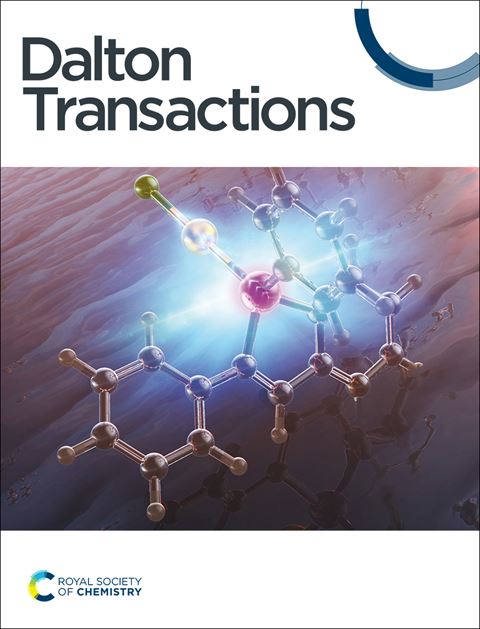Facile preparation of carbon, nitrogen co-doped NiMoO4·MoO2 heterostructures derived from polyoxometalate with ultrahigh energy density for zinc-ion capacitors
IF 3.5
3区 化学
Q2 CHEMISTRY, INORGANIC & NUCLEAR
引用次数: 0
Abstract
Aqueous zinc ion hybrid supercapacitors (ZHSC) have attracted great attention in recent years. However, their electrochemical performance is prohibited by the low energy density and poor cycling stability, mainly due to the difficulty in effectively activating the ionic and electronic conductivity of the cathode material. In this work, we innovatively propose a low-cost, precisely customized strategy for doping trace amounts of carbon and nitrogen elements into metal oxides to improve electrochemical performance. The carbon and nitrogen-doped NiMoO4·MoO2/NC heterostructures derived from polyoxometalates maintain high electrochemical activity while achieving high ionic conductivity. Trace amounts of carbon and nitrogen elements can significantly improve electronic conductivity and charge storage capacity. Due to the synergistic contribution, the composite structure with multi-redox sites exhibits a high specific capacity value of 364.96 F/g at 1 A/g in 1 M ZnSO4. A ZHSC was assembled with NiMoO4·MoO2/NC as the cathode and zinc sheet as the anode. After 10000 cycles, the capacitance retention rate still reached over 80 %. In addition, its energy density and power density can also reach 102 Wh Kg-1@4140 W Kg-1, which is higher than that of MoO2-based traditional supercapacitors. This strategy fully demonstrates the great practicality and development prospects of polyoxometalate derivatives for ZHSC.基于多金属氧酸盐的超高能量密度、碳、氮共掺杂NiMoO4·MoO2异质结构的制备
近年来,锌离子混合超级电容器(ZHSC)受到了广泛的关注。但能量密度低,循环稳定性差,阻碍了它们的电化学性能,这主要是由于难以有效激活正极材料的离子电导率和电子电导率。在这项工作中,我们创新地提出了一种低成本,精确定制的策略,将微量的碳和氮元素掺杂到金属氧化物中,以提高电化学性能。由多金属氧酸盐衍生的碳氮掺杂NiMoO4·MoO2/NC异质结构在获得高离子电导率的同时保持了较高的电化学活性。微量的碳和氮元素可以显著提高电子导电性和电荷存储能力。由于协同作用的贡献,具有多个氧化还原位点的复合结构在1 μ M ZnSO4中,在1 a /g时具有364.96 F/g的高比容量值。以NiMoO4·MoO2/NC为阴极,锌片为阳极组装ZHSC。经过10000次循环后,电容保持率仍然达到80%以上。此外,其能量密度和功率密度也可达到102 Wh Kg-1@4140 W Kg-1,高于基于moo2的传统超级电容器。这一策略充分体现了多金属氧酸盐衍生物对ZHSC的巨大实用性和发展前景。
本文章由计算机程序翻译,如有差异,请以英文原文为准。
求助全文
约1分钟内获得全文
求助全文
来源期刊

Dalton Transactions
化学-无机化学与核化学
CiteScore
6.60
自引率
7.50%
发文量
1832
审稿时长
1.5 months
期刊介绍:
Dalton Transactions is a journal for all areas of inorganic chemistry, which encompasses the organometallic, bioinorganic and materials chemistry of the elements, with applications including synthesis, catalysis, energy conversion/storage, electrical devices and medicine. Dalton Transactions welcomes high-quality, original submissions in all of these areas and more, where the advancement of knowledge in inorganic chemistry is significant.
 求助内容:
求助内容: 应助结果提醒方式:
应助结果提醒方式:


